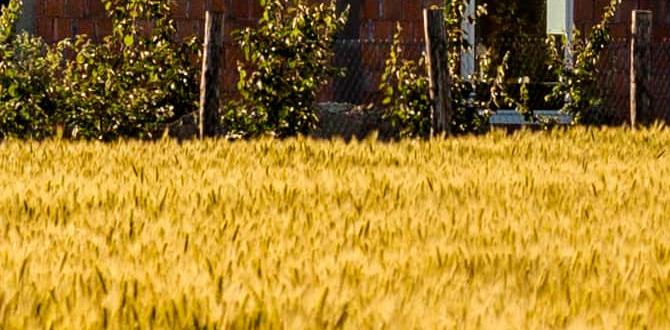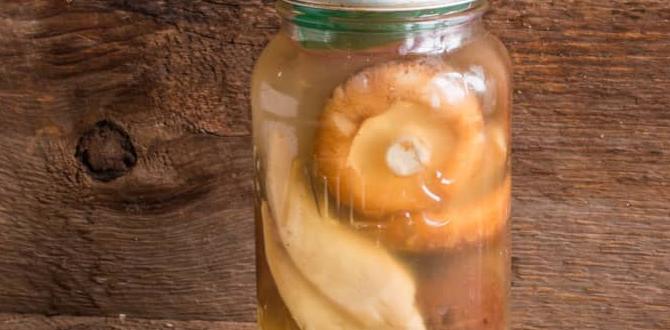Planning a Bay of Islands shoulder season trip means enjoying fewer crowds, lower prices, and beautiful weather. Essential planning involves booking accommodations and activities in advance, packing layers for variable conditions, and understanding local transport options to make the most of your New Zealand adventure.
Dreaming of turquoise waters, lush islands, and sunny skies, but not the summer crowds? The Bay of Islands in New Zealand offers a magical experience during its shoulder seasons – spring (September to November) and autumn (March to May).
It’s a sweet spot where you can often find pleasant weather, fewer tourists, and often better deals. However, without a little smart planning, you might find yourself caught out by unexpected weather changes or limited activity options. Don’t worry, this guide is here to make your shoulder season adventure smooth sailing! We’ll walk through exactly what you need to know to plan an unforgettable trip.
Why the Shoulder Season is So Special
The Bay of Islands is a quintessential New Zealand destination, famous for its stunning coastline, maritime history, and abundant marine life. While the peak summer months (December to February) bring sunshine and warmth, they also bring the busiest season. Shoulder seasons offer a different kind of charm.
Spring (September – November): As the days lengthen, the landscape bursts into bloom. The air is fresh, and nature awakens from its winter slumber. It’s a fantastic time for hiking and exploring before the intense summer heat arrives. You’ll see the islands coming alive with vibrant colours.
Autumn (March – May): This season offers what many consider the best weather. The days are still warm and sunny, but the humidity drops, and the evenings are crisp and clear. The foliage turns beautiful shades of gold and red, adding a picturesque backdrop to your travels. It’s perfect for enjoying outdoor activities without breaking a sweat.
Benefits of Shoulder Season Travel
Choosing to visit during the shoulder season comes with a host of advantages:
- Fewer Crowds: Experience popular spots like Paihia and Russell with a more relaxed atmosphere. You’ll have more space to explore historical sites and enjoy the beaches without feeling overwhelmed.
- Lower Prices: Accommodation and sometimes even flight prices can be significantly lower than during peak season. This means your travel budget can stretch further, allowing for more activities or longer stays.
- Pleasant Weather: While not as consistently hot as summer, the shoulder seasons generally boast comfortable temperatures perfect for exploring. Think mild days ideal for sightseeing and gentle sea breezes.
- Authentic Experience: With fewer tourists, you’re more likely to interact with locals and get a genuine feel for the Bay of Islands lifestyle.
Essential Planning Steps for Your Trip
To ensure your Bay of Islands shoulder season trip is as enjoyable as possible, thorough planning is key. Here’s a step-by-step guide:
Step 1: Choose Your Dates Wisely
While we’ve discussed the general periods of spring and autumn, consider the specific micro-seasons within them.
- Early Spring (September-October): Can still have cooler days and occasional rain, but wildflowers are starting to appear. Prices are typically at their lowest.
- Late Spring (November): Warmer temperatures, longer daylight hours, and everything is in full bloom. It’s a popular time, so booking ahead is recommended.
- Early Autumn (March-April): Still feels like summer with warm days and calmer seas. Many summer activities are still in full swing.
- Late Autumn (May-June): Days become shorter and cooler, and some tourist-oriented businesses might reduce hours or close. Prices can drop again.
Think about what’s most important to you: budget, specific activities, or the most reliable weather. For a good balance, late spring (November) and early autumn (March-April) often hit the sweet spot.
Step 2: Book Accommodation in Advance
Although there are fewer tourists, popular areas like Paihia, Russell, and Kerikeri can still get booked up, especially during school holidays or over long weekends. Booking early secures your preferred choice and often better rates.
Consider a range of options:
- Hotels and Motels: Offer comfort and amenities, often with great locations.
- Holiday Parks: Ideal for families or those on a budget, providing cabins, powered sites for campervans, and communal facilities.
- Boutique Lodges and Bed & Breakfasts: For a more intimate and personalized experience.
- Holiday Homes/Apartments: Great for longer stays or larger groups, offering more space and self-catering facilities.
Insider Tip: Websites like New Zealand Tourism Official (newzealand.com) offer comprehensive lists and booking options. For more unique stays, explore platforms like Airbnb, but remember to filter by cancellation policies.
Step 3: Research and Book Activities
The Bay of Islands is renowned for its activities. Booking ahead, particularly for boat tours, ensures you don’t miss out.
Popular shoulder season activities include:
- Boat Tours: Explore the Hole in the Rock, go dolphin watching, or visit historic Russell. Many companies operate year-round.
- Kayaking and Paddleboarding: Ideal for exploring sheltered bays and coves.
- Hiking: Explore coastal tracks and the Waitangi Treaty Grounds.
- Fishing Charters: The waters are teeming with life.
- Visiting Historic Towns: Paihia, Russell, and Kerikeri offer history, culture, and charming shops.
Consider a Multi-Activity Pass: Some operators offer bundled deals that can save you money if you plan to do several popular excursions.
Step 4: Packing Essentials for Variable Weather
New Zealand weather can be notoriously changeable, even in the shoulder seasons. Layering is your best friend!
What to Pack:
- Waterproof and Windproof Jacket: Essential for unpredictable rain showers and sea spray. Look for something breathable.
- Fleece or Warm Jumper: For cooler evenings or windy boat trips.
- Comfortable Walking Shoes: You’ll be doing a lot of exploring on foot.
- T-shirts and Long-Sleeved Shirts: For layering during the day.
- Sunscreen, Hat, and Sunglasses: The sun can still be strong.
- Swimsuit: For those brave enough for a dip or for hot pools.
- Insect Repellent: Especially if you plan on hiking or being out at dawn/dusk.
- Reusable Water Bottle: Stay hydrated and reduce plastic waste.
- Camera: To capture the stunning scenery!
- Daypack: For carrying essentials on excursions.
Special Considerations for Families:
If you’re traveling with children, remember to pack their essentials, including any comfort items. For families needing discreet and reliable personal care solutions, consider packing adult or child diapers.
Brands offering discreet designs and high absorbency can provide peace of mind for longer days exploring or during travel. Having these on hand can alleviate stress and allow everyone to focus on enjoying the trip. Look for options designed for active wear if you anticipate a lot of movement.
Step 5: Transportation Options
Getting around the Bay of Islands requires some planning.
- Car Rental: This offers the most flexibility, especially if you plan to explore beyond the main towns. Book your rental car well in advance, as availability can be limited. Consider the size of vehicle needed for your group and luggage.
- Public Transport: Intercity buses connect major towns, but they are less frequent. Local bus services within towns can be limited.
- Ferries: Essential for getting between Paihia, Russell, and the surrounding islands. Check ferry schedules as they can vary by season.
- Taxis and Ride-Sharing: Available in main centres but can be expensive for longer distances.
- Pace yourself: Don’t try to pack too much driving into one day. Enjoy the journey between locations.
A useful resource for planning your journey around New Zealand is the official transport website, which outlines various options: New Zealand Transport Agency (nzta.govt.nz).
Step 6: Food and Dining
The Bay of Islands offers a range of culinary experiences, from casual fish and chips on the beach to fine dining. In the shoulder season, some restaurants might have slightly reduced hours, so it’s wise to check in advance, especially for dinner.
Local Delights to Try:
- Fresh Seafood: Oysters, mussels, and locally caught fish are a must.
- Kiwi Classics: Try a “hangi” (traditional Maori earth oven meal) or enjoy lamb and other local produce.
- Cafes: Many charming cafes offer delicious coffee and light meals, perfect for a mid-morning break.
Self-Catering: If you have accommodation with kitchen facilities, visiting local markets and supermarkets can be a cost-effective and enjoyable way to experience Rotorua’s produce. Kerikeri has a great farmers’ market on Saturdays.
Step 7: Digital Detox and Connectivity
While it’s tempting to stay connected, the Bay of Islands is the perfect place to enjoy a bit of a digital detox. However, it’s practical to have a plan.
- Wi-Fi: Most accommodations and many cafes offer Wi-Fi, though speeds can vary off the beaten path.
- Mobile Coverage: Major towns have good mobile reception. Areas further afield, especially on islands or remote beaches, may have spotty coverage.
- Offline Maps: Download maps of the area on your phone before you go. Apps like Google Maps allow offline downloads.
- Power Adapters: New Zealand uses Type I plugs. Ensure you have the correct adapter for your devices.
Weather Considerations for Shoulder Season
The Bay of Islands experiences a temperate maritime climate. Shoulder seasons offer a transition, meaning you can experience a spectrum of weather within days.
| Season | Month | Average Daytime Temperature (°C) | Average Daytime Temperature (°F) | Notes |
|---|---|---|---|---|
| Spring | September | 16°C | 61°F | Cooler days, potential for rain. |
| Spring | October | 18°C | 64°F | Warming up, wildflowers bloom. |
| Spring | November | 20°C | 68°F | Pleasant, longer days, increasing sunshine. |
| Autumn | March | 21°C | 70°F | Warm, settled weather, fewer crowds. |
| Autumn | April | 19°C | 66°F | Mild, crisp air, beautiful foliage. |
| Autumn | May | 17°C | 63°F | Cooler, shorter days, good for budget travel. |
Key Takeaway: Be prepared for anything! A sunny morning can turn into a breezy afternoon. Versatile clothing is essential.
Budgeting for Your Bay of Islands Trip
The shoulder season is excellent for budget-conscious travellers. Here’s how costs can differ:
- Accommodation: Expect to save anywhere from 10-30% compared to peak summer rates.
- Flights: Off-peak flights to Auckland (closest international airport) can generally be cheaper.
- Activities: While many activity prices remain the same, package deals or last-minute offers might be more prevalent as operators seek to fill spots.
- Food: Eating at local cafes and pubs is often more affordable than high-end restaurants.
- Car Hire: Demand is lower, so car rental prices may also be more competitive.
Average Daily Budget (Excluding Flights/Car Hire):
- Budget Traveller: NZ$100 – $150 per person per day (hostels, self-catering, free activities).
- Mid-Range Traveller: NZ$200 – $300 per person per day (comfortable motels/B&Bs, a mix of eating out and self-catering, paid activities).
- Comfort Traveller: NZ$350+ per person per day (boutique hotels, dining out, multiple tours).
Making the Most of Your Bay of Islands Experience
Beyond the practical planning, remember to immerse yourself:
- Embrace Slow Travel: Don’t rush. Take time to enjoy the stunning views, chat with locals, and soak in the relaxed atmosphere.
- Explore Beyond the Main Hubs: While Paihia and Russell are popular, consider day trips to places like Mangonui or Takahue for a different perspective.
- Look for Local Events: Shoulder seasons can host local markets, festivals, or community events that offer unique cultural insights. Check local council websites or community notice boards.
- Respect the Environment: The Bay of Islands is a precious ecosystem. Be mindful of your impact, dispose of waste properly, and support eco-friendly tourism operators. The Department of Conservation (doc.govt.nz) provides great tips on responsible tourism in New Zealand’s natural areas.
Frequently Asked Questions
Q1: What is the best month for the Bay of Islands shoulder season?
The best month often depends on personal preference. For a good balance of warm weather, fewer crowds, and longer daylight hours, November and March/April are excellent choices. If budget is the primary concern and you don’t mind cooler temperatures, September and May can be ideal.
Q2: Is the weather reliable during the shoulder season?
While shoulder seasons generally offer pleasant weather, New Zealand is known for its changeable climate. You can expect a mix of sunny days, cooler mornings and evenings, and the possibility of rain. Packing layers is crucial to adapt to fluctuating conditions.
Q3: Can I still do boat tours and water activities?
Overwhelmingly, yes! Most tour operators continue to run their services throughout the year, particularly in popular destinations like the Bay of Islands. While some might reduce frequency, you’ll find plenty of opportunities for boat trips, kayaking, and swimming, weather permitting.
Q4: Are attractions and businesses open during the shoulder season?
Most major attractions, restaurants, and shops in key tourist hubs like Paihia, Russell, and Kerikeri remain open. However, some smaller, seasonal businesses or those in more remote locations might reduce their operating hours or close for part of the shoulder season. It’s always a good idea to check opening times in advance.
Q5: What should I pack specifically for the shoulder season?
The key is layering. Pack a waterproof and windproof jacket, warm fleeces or jumpers, long-sleeved shirts, t-shirts, comfortable walking shoes, sunscreen, a hat, and sunglasses. Don’t forget swimwear if you’re hoping for a dip!






